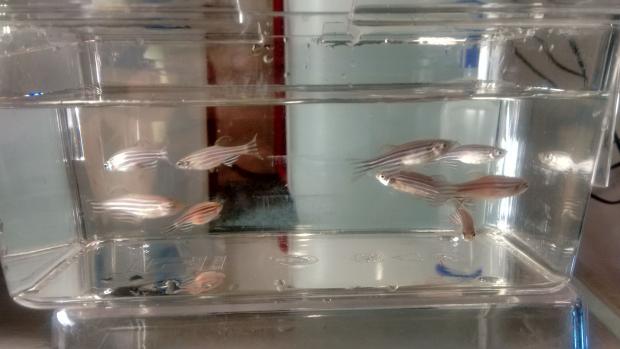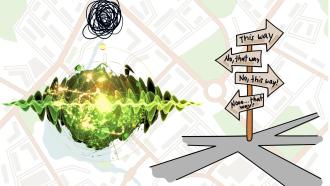
Photo : Dr. Chinmoy Patra
A recent study on zebrafish shows that these little blue and white coloured fish, unlike humans, may not always learn from a more experienced individual, but behave independently depending on the situation and the environment they are in.
The study published in Behavioural Processes, Prof. Anuradha Bhat and Tamal Roy from the Indian Institute of Science Education and Research Kolkata, India, tested if zebrafish could learn from others when ‘asked’ to perform a spatial performance task like solving a maze. The study was supported by a fellowship to Tamal Roy from the Council of Scientific and Industrial Research (CSIR) and academic research funds from IISER Kolkata.
As social beings, we humans learn much about the way society works by paying attention to our surroundings as well as to the people in it. For example, you watch your siblings whoop and laugh as they swing from the curtains and think, “That must be fun!” Then, when they get yelled at later, you quip -“it’s probably a bad idea”.
Animals – especially those that live in groups like elephants or honeybees – learn from the other members of their group. The younger ones observe how the older ones are foraging, feeding, evading predators, attracting mating partners, and copy the same. However, there exist a few exceptions like zebrafish.
The researchers performed two sets of experiments to observe if the fish learnt from one another. In the first, one set of fish was individually trained to find the food in the maze for eight days. These ‘demonstrators’ were then paired up with a naïve or untrained individual called an ‘observer’ for a few days, after which the observers were placed in the maze by themselves.
In the second experiment, naïve individuals were paired up and allowed to manoeuvre the maze in search for food. They did not have a demonstrator to guide them and both were new to the environment. After a few days, one from each pair was removed and the remaining placed in the maze individually to note their performance.
The performance time and number of mistakes were noted for each individual, and the results from the two experiments compared. It was found that although the observers seemed to be finding the food faster over the course of the trials, given that they were still making similar number of mistakes, it appears that they had not really ‘learnt’ to perform better as a result of their pairing with a ‘demonstrator’. The slope obtained from the graph of performance time vs trial number - or rate of performance - indicated the same. Statistically, these performance rates were not that different between naive-paired individuals and observers.
We all know how a maze works – you manoeuvre your way through the structure, get to the reward and be a winner. For the study, the researchers placed the food reward in a maze behind a red door, in a chamber on one side of the maze. This meant that the fish had to get two aspects right –colour and correct side – to get to the reward.
Of course, several other factors could have come into play here, like competition, sex, size difference, etc. Zebrafish, being a highly gregarious species, could have become more inquisitive about their new partner after several days in solitude, allowing their curiosity to overcome their need to find food. The ‘demonstrator’ could have also viewed the new individual as a competitor, urging them to search for food separately rather than together. However, the fact remains that the fish performed better on their own rather than when they were in pairs which implies that a simplistic environment - as compared to their complex natural habitats - could have led to a reduced need for social learning.
“For a species like zebrafish that tend to shoal in groups of 20 or more in their natural habitats, it seems intuitive that populations should gain some benefit from living in such groups, as they also need to contend with competition for food, and mates. This study is a beginning towards understanding how paired foragers could benefit when they have to explore and search for potential feeding groups in complex habitats,” says Prof. Bhat.






